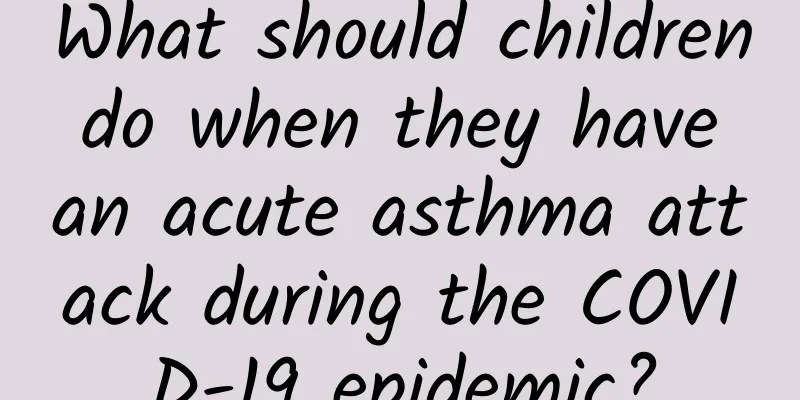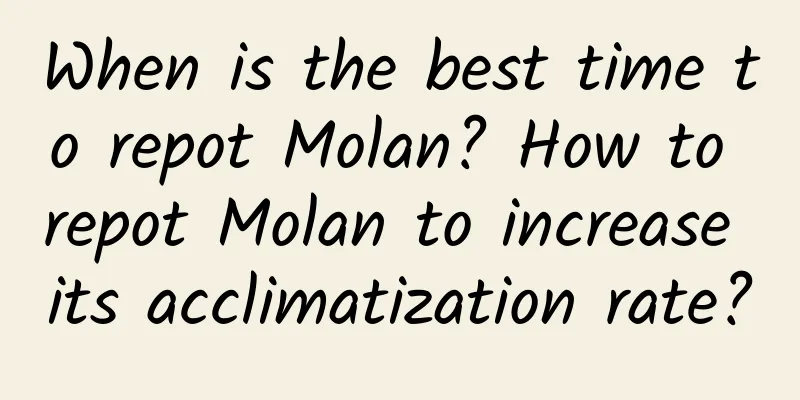What should children do when they have an acute asthma attack during the COVID-19 epidemic?

|
Author: Yu Xingmei Children's Hospital Affiliated to Suzhou University Zhang Xinxing, deputy chief physician of Children's Hospital of Suzhou University Reviewer: Hao Chuangli, Chief Physician, Children's Hospital Affiliated to Soochow University It is estimated that there are 339 million asthma patients in the world, and about 1,000 people die from asthma every day. In 2016, the number of deaths from asthma worldwide was 420,000. The mortality rate of childhood asthma is 0 to 0.7/100,000. For families with children with asthma, it is crucial to know how to properly handle acute attacks of asthma in children during the special period of epidemic prevention and control. This article will help parents understand the relevant knowledge of acute asthma attacks and emergency treatment from the aspects of understanding the precursors, manifestations, severity judgment and reasonable emergency treatment of childhood asthma attacks, as well as sequential management after the attack, so as to add another safety lock for children with asthma. 1. How to judge acute asthma attack in children Prodromal symptoms: runny nose, sneezing, coughing, and some children have symptoms such as chest tightness. Acute attack: Cough, wheezing, shortness of breath, and chest tightness that occur suddenly after exposure to the environment or irritants. If the above symptoms progressively worsen, it is considered an acute attack of asthma. Determining the severity of an asthma attack in children 1. If the child develops the above symptoms while at home, the severity of the situation should be assessed (see the table below) so that better treatment measures can be taken.
(1) The effects of quick-relief drugs do not last long or are completely ineffective, and breathing remains rapid and difficult. (2) Difficulty speaking due to asthma attack. (3) Gray or bluish lips or nails. (4) The nostrils flare when breathing. (5) The ribs and neck skin indent when breathing. (6) Heart rate and pulse are very fast. (7) Difficulty walking. Children's Asthma Severity Assessment Scale 3. Emergency treatment process for acute asthma attack in children at home 1. Process for treating acute asthma attacks in children with asthma at home (Figure 1) Figure 1 Copyright image, no permission to reprint 2. Home medication process (1) If conditions for nebulized administration are met, nebulized inhalation should be the first choice. Figure 2 Copyright image, no permission to reprint (2) When there is no nebulization condition, use a pressurized metered dose inhaler (pMDI) + storage tank. Figure 3 Copyright image, no permission to reprint Note: Spray a single dose each time, use 4 to 10 sprays continuously (3 to 6 sprays for children under 6 years old), 20 minutes × 3 times. 3. Post-treatment response assessment (1) Good response : mild wheezing, coughing, dyspnea or chest tightness; symptoms only occur during activity, but not at rest; repeat treatment every 3 to 4 hours as needed within 24 to 48 hours; continue with regular nebulization or inhalation treatment; contact a doctor if symptoms recur; make an appointment for outpatient follow-up. (2) General reaction : obvious wheezing, dyspnea or repeated coughing; symptoms also occur when resting; inhalation of β2 receptor agonists (Ventolin) every hour; oral glucocorticoids; if the condition does not improve within 2 to 6 hours, seek medical attention immediately. If symptoms worsen, go to the hospital emergency room or call 120 emergency number. (3) Poor response: severe wheezing and breathing difficulties, intermittent speech; severe symptoms persist even when resting; call 120 emergency number for emergency treatment. 4. Sequential management of children with asthma after an acute attack 1. Environmental management (1) Eliminate asthma triggers in your home: smoking, irritating odors, and pet hair. (2) Reduce the use of plush toys and carpets. (3) Clean bedding regularly. (4) Open windows for ventilation as appropriate. (5) Perform household chores when the patient is not at home. (6) Maintain a good work and rest schedule and get adequate exercise. 2. Medication management (1) Supervise patients to take medication correctly every day. (2) Peak flow rate can be monitored at home. (3) Do not stop taking medications to control asthma attacks without permission. 3. When children with asthma go out to play, they need to be equipped with the asthma emergency medicine salbutamol aerosol (Ventolin aerosol) to prepare for emergency treatment of sudden asthma attacks. |
Recommend
Why is the ovulation test paper positive right after my period?
When the ovulation test strip is tested, it can n...
What should you pay attention to before taking Down syndrome screening?
Down syndrome screening is a relatively common ex...
Can pregnant women smell the smoke of moxibustion?
Moxibustion is a kind of medicine that people gen...
Does running a marathon hurt your knees? Can anyone run a marathon?
17th In the Xi'an Marathon One runner stopped...
Don't panic if you have chronic prostatitis
Author: Chen Gang, Chief Physician, First Affilia...
Hysteroscopic embryo retrieval
Hysteroscopic embryo retrieval is a new type of a...
Can vaginal ultrasound check the fallopian tubes?
Although vaginal ultrasound causes greater harm t...
The safe period is usually a few days after menstruation
Every woman has to bear the responsibility of hav...
Is 5 days after menstruation a safe period?
Many women are still concerned about their safe p...
How to detect vascular age
People age, and blood vessels age, just like tree...
What are the changes in body temperature after ovulation if you are not pregnant?
Ovulation is a physiological characteristic of wo...
What is the effect of moxibustion? Where can moxibustion be used to lose weight?
In addition to the role of weight loss, moxibusti...
Is chronic cervical erosion serious?
Chronic cervical erosion is also very serious and...
What medicine should I take if my menstruation is always early?
Menstruation is a normal physiological cycle for ...
If you didn't smoke today...
May 31, 2023 is the 36th World No Tobacco Day. In...









